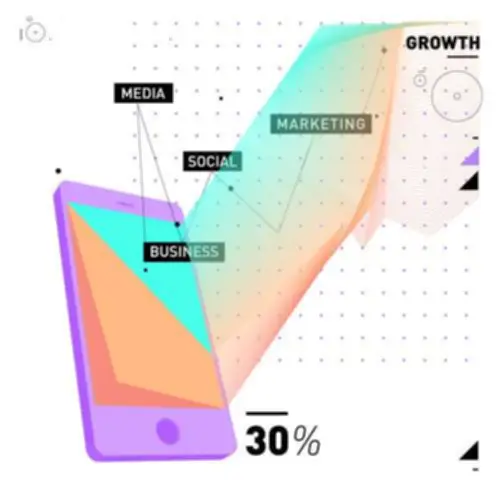To demonstrate the treatment of the allowance for doubtful accounts on the balance sheet, assume that a company has reported an Accounts Receivable balance of $90,000 and a Balance in the Allowance of Doubtful Accounts of $4,800. The following table reflects how the relationship would be reflected in the current (short-term) section of the company’s Balance Sheet. The first entry reverses the bad debt write-off by increasing Accounts Receivable (debit) and decreasing Bad Debt Expense (credit) for the amount recovered. The second entry records the payment in full with Cash increasing (debit) and Accounts Receivable decreasing (credit) for the amount received of $15,000. For the taxpayer, this means that if a company sells an item on credit in October 2018 and determines that it is uncollectible in June 2019, it must show the effects of the bad debt when it files its 2019 tax return. This application probably violates the matching principle, but if the IRS did not have this policy, there would typically be a significant amount of manipulation on company tax returns.
This eliminates the revenue recorded as well as the outstanding balance owed to the business in the books. The direct write off method is simpler than the allowance method as it takes care of uncollectible accounts with a single journal entry. It’s certainly easier for small business owners with no accounting background. It also deals in actual losses instead of initial estimates, which can be less confusing. The direct write-off method delays recognition of bad debt until the specific customer accounts receivable is identified.
Legal Remedies and Collections Agencies in Navigating Uncollectible Accounts Receivable
However, it’s wise to reconsider your approach if it’s been several months or even a year with no promise of payment. It’s important to realize that not every unpaid invoice warrants a date in court. If the amount owed surpasses a particular figure, which severely impacts your business, it may be time to involve legal counsel. We need to distinguish between bad debt and uncollectible accounts before venturing any further.
The income statement method (also known as the percentage of sales method) estimates bad debt expenses based on the assumption that at the end of the period, a certain percentage of sales during the period will not be collected. The estimation is typically based on credit sales only, not total sales (which include cash sales). In this example, assume that any credit card sales that are uncollectible are the responsibility of the credit card company. It may be obvious intuitively, but, by definition, a cash sale cannot become a bad debt, assuming that the cash payment did not entail counterfeit currency.
Module 6: Receivables and Revenue
Allowance for doubtful accounts decreases because the bad debt amount is no longer unclear. Accounts receivable decreases because there is an assumption that no debt will be collected on the identified customer’s account. As you’ve learned, the delayed recognition of bad debt violates GAAP, specifically the matching principle. Therefore, the direct write-off method is not used for publicly traded company reporting; the allowance method is used instead. Notice how we do not use bad debts expense in a write-off under the allowance method. But, the write off method allows revenue to be expensed whenever a business decides an invoice won’t be paid.
Resources for Your Growing Business
If we aren’t getting any, our credit standards may be too tight—we may be losing legitimate, profitable sales by refusing to serve perfectly fine customers who are just not up to our high standards. The direct write-off method waits until an amount is determined to be uncollectible before identifying it in the books as bad debt. Reporting revenue and expenses in different periods can make it difficult to pair sales and expenses and assets and net income can be overstated.
- They leave you with a sour taste in your mouth and can ruin relationships you’ve worked tirelessly to build with clients.
- Consider why the direct write-off method is not to be used in those cases where bad debts are material; what is “wrong” with the method?
- The direct write off method is a way businesses account for debt can’t be collected from clients, where the Bad Debts Expense account is debited and Accounts Receivable is credited.
- However, the impact on your income statement is dependent on which write-off method you apply.
- It does so with a $2,000 credit to the accounts receivable account and an offsetting debit to the bad debt expense account.
Thus, the profit in the initial month is overstated, while profit is understated in the month when the bad debts are finally charged to expense. The alternative to the direct write off method is to create a provision for bad debts in the same period that you recognize revenue, which is based upon an estimate of what bad debts will be. This approach matches revenues with expenses, so that all aspects of a sale are included within a single reporting period. Conversely, the direct write-off method might involve a delay of several months between the initial sale and a charge to bad debt expense, which does not provide a complete view of a transaction within one reporting period. Therefore, the allowance method is considered the more acceptable accounting method.
The Direct Write off Method vs. the Allowance Method
But the allowance method is more commonly preferred and often used by larger companies and businesses frequently handling receivables. If you’re wondering which method is best for your small business, speak with a professional for insights into your specific situation. You may notice that all three methods use the same accounts for the adjusting entry; only the method changes the financial outcome.
These are not yet recognized as expenses, as you’re still clinging to the hope of being collected. These too might transition into bad debts over time if efforts remain unsuccessful. The direct write off method violates GAAP, the generally accepted accounting principles. GAAP says that all recorded revenue costs must be expensed in the same accounting period. This is called the matching principle, according to Accounting Tools. Under the direct write off method, when a small business determines an invoice is uncollectible they can debit the Bad Debts Expense account and credit Accounts Receivable immediately.
The direct write-off method is easy to operate as it only requires that specific debts are written off with a simple journal as and when they are identified. The problem however, is that under generally accepted accounting principles (GAAP), the method is not acceptable as it violates the matching principle. Under the allowance method, a company needs to review their accounts receivable (unpaid invoices) and estimate what amount they won’t be able to collect.
Client bankruptcy is one of the primary reasons for uncollectibility. Filing for bankruptcy typically means the client is legally unable to fulfill their debt roadmap and milestones obligations. It’s essentially revenue you counted on but will probably never materialize. You already incurred costs of delivering a product or service, which makes matters worse.
Businesses might experience an uptick in uncollectible accounts during economic recessions or spending variance industry-specific slumps. These disputed charges can linger if not addressed promptly, turning into longstanding uncollectible accounts. Fortunately, this is where you have more power to collect on the amount owed to you. As accountants, we help management collect and analyze the information it needs to make these credit decisions, but we also have to account for the bad accounts we won’t collect.




